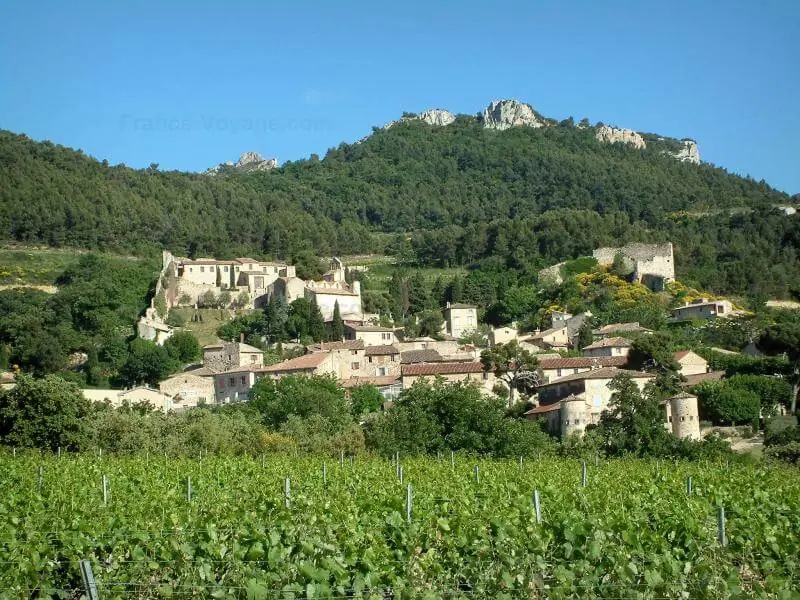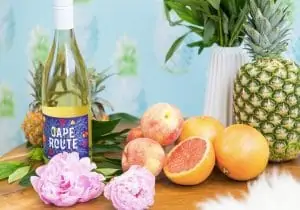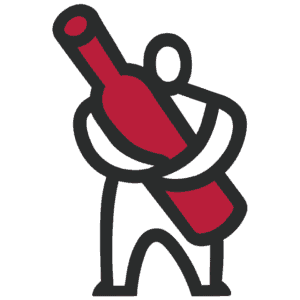
Gigondas Wine History
To truly appreciate Gigondas wine you need to understand a little history. Sometime around the 1st century BCE, Julius Caesar established a veteran’s colony twelve miles northeast of the city of Orange in today’s Southern Rhone Valley. Amongst other activities, the soldiers took up winemaking. The first landowner in the region was a jovial soldier nicknamed Jucundus – in Latin the name means ‘the joyful’ – and the village took on the name Jocundatis. Today this commune is known as Gigondas.
Vines have grown in the region since the Roman’s early cultivation, but due to the region’s comparative isolation off of the main trade routes of the day, the wines lacked exposure in the market, and winemakers similarly lacked exposure to evolving methods of production that allowed CDP, and other major centers of wine production, to pursue quality. Thus, the region earned a reputation for rustic, brawny wines, and pre-WWII casks were sometimes shipped north to bolster thin vintages in Burgundy.
However, around the turn of the 20th century, there was increasing evidence of the prestige possible in Gigondas as wines from the region began to medal in contests throughout France. Quality continued to improve, and in 1971 Gigondas received Cru (AOC) status.
Gigondas Wine Growing Conditions And Grapes
The region has a diverse range of soil types ranging from alluvial sands by the Ouvèze River, with various layers of marl and limestone as one moves up the slopes of the Dentelle de Montmirail Mountains – the regions defining geographic feature. The wines are made from a minimum 50% Grenache. Syrah and Mourvèdre are also mandatory and together must make up at least 15% of the blend. In total, these three varieties are required to make up 90% of the wine and typically constitute the entirety, though all other Côtes du Rhone varieties, excepting Carignan, are permitted in the remaining 10%.
Gigondas Wine To Buy
The region’s best wines share elements with CDP, particularly that campfire character of something roasting, whether it is meat or herbs, with dark fruit flavors and savory tannins. However, Gigondas often has a floral perfume and a sultriness that distinguishes it from its cousin in the Rhone, with some winemakers claiming a closer kinship to Burgundy than CDP.
One such winemaker is Louis Barroul of Chateau de Saint Cosme. On the region’s oldest estate (dating back to 1416), Barroul is making some of the region’s most celebrated, single-vineyard bottles (Hominides Fides, Le Claux). And while those wines will set you back $100+, the Chateau de Saint Cosme Gigondas 2016 is an affordable, special-occasion selection that should exceed a similarly priced wine from CDP, or Burgundy for that matter. It’s well worth seeking out these wines sooner than later, as the winery is growing increasingly iconic, with prices sure to follow.
If you prefer to dip into Gigondas wine at a friendlier price point, Jöel and Amie Saurel – the husband and wife team behind Domain St. Damien – are making complex, terroir-driven wines that showcase a spectrum of flowers, fruit, and spice. Their Gigondas Vieilles Vignes 2015 is drinking extremely well, with surprisingly supple tannins and a plush body of fruit, cedar, and smoke.
You can order Gingondas wine here:
About the author - Ryan Kraemer is a Los Angeles-based certified sommelier working a 71 Above, Chef Vartan Abgaryan's downtown seasonal fine-dining restaurant. When he's not at work, or studying wine, he enjoys cooking, travel, and strolls around Echo Park Lake with his girlfriend and their pup. He's never been able to answer the question, 'So what's your favorite wine?' because it feels too much like picking a favorite child.


